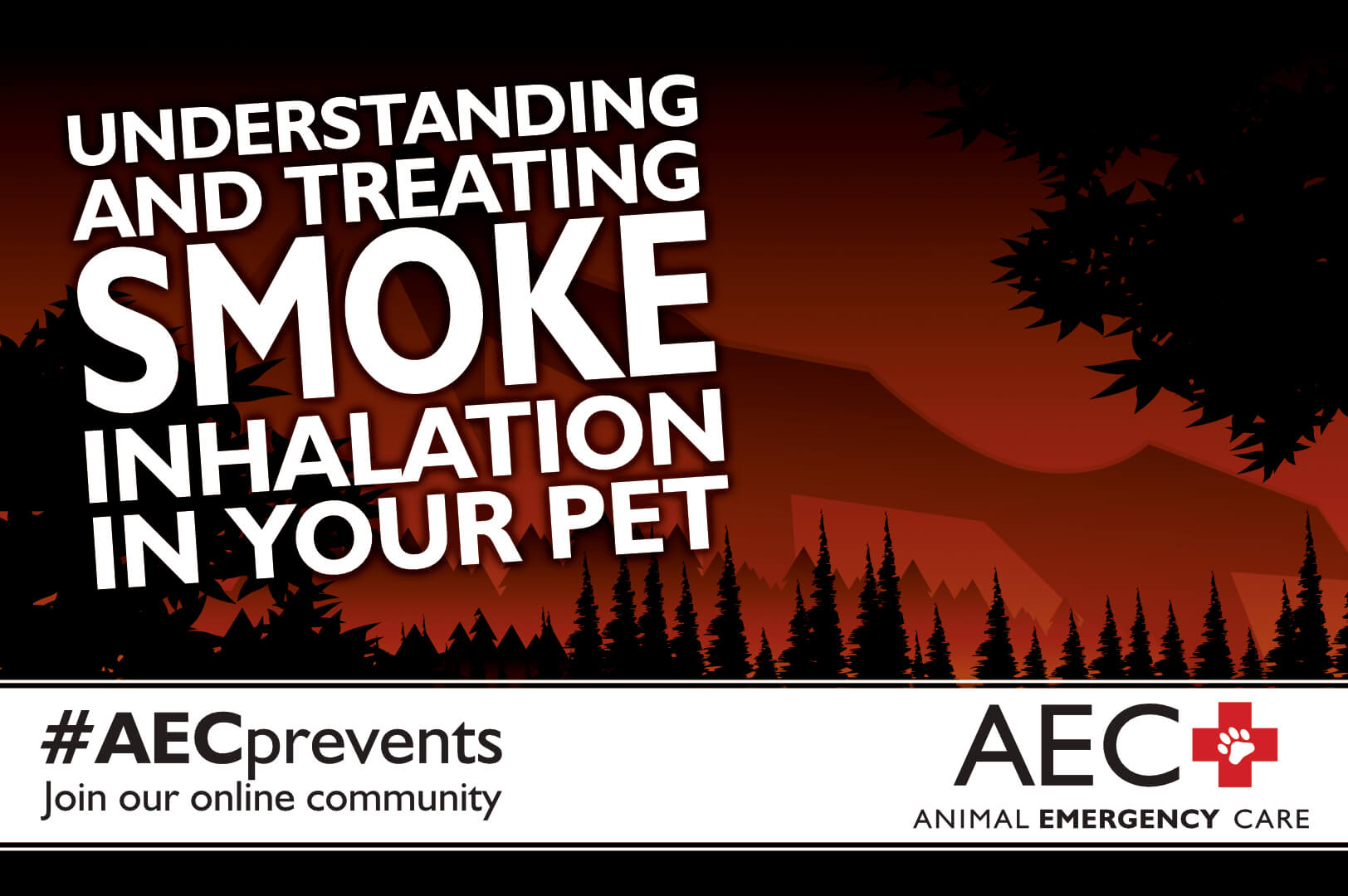An unexpected fire, whether a residential or an environmental wildfire, can be a devastating and stressful experience. Multiple fire-related events are dangerous for people and their pets including burns, toxic chemicals, and smoke inhalation, but many problems are not immediately obvious following fire exposure. The National Volunteer Firefighter Council estimated that more than 40,000 pets die each year in fires, and most are from smoke inhalation complications. Our Animal Emergency Care team wants to ensure pet owners can recognize the signs, and react quickly if your pet is exposed to any type of smoke.
What is smoke inhalation in pets?
Smoke inhalation injury can occur following exposure to smoke in small or large quantities. Fires produce a variety of toxins that can affect your pet’s respiratory tract and overall well-being. Pets who are exposed to a fire are at risk for skin burns, in addition to the following:
- Carbon monoxide — This colorless, odorless gas is produced during a fire and affects the body’s ability to properly deliver oxygen to the tissues. Some home appliances including clothes dryers, water heaters, and gas stoves, can produce carbon monoxide.
- Hydrogen cyanide — This chemical may be released during a fire as a result of burning plastic, cotton, wool, or other synthetic materials. Like carbon monoxide, hydrogen cyanide also prevents the body from delivering required oxygen to tissues.
- Thermal injury — Heat that is associated with smoke and fire exposure can cause burns on the face and through the respiratory tract which can lead to severe inflammation.
- Chemical irritants — Pets are at risk for exposure to a variety of chemical irritants which will depend on the type of substance burning. Chemical burns can lead to severe lung and airway damage.
Smoke inhalation signs in pets
Clinical smoke inhalation signs are variable, and depend on the amount of smoke exposure, type of associated chemicals, and duration of exposure. Smaller pets and pets who have underlying respiratory problems are most at risk for smoke inhalation complications or increased sign severity. Clinical signs may not be immediately obvious and can occur more than 24 to 36 hours following exposure. Smoke inhalation signs may include:
- Difficulty breathing
- Increased respiratory rate
- Coughing
- Wheezing
- Eye redness
- Eye squinting
- Changes in barking or meowing sounds
- Facial swelling and burns
- Blisters over the mouth
- Excess salivation
- Vomiting
- Depression
- Lethargy
- Uncoordinated gait
- Seizures
- Coma
Smoke inhalation diagnosis and treatment in pets
Immediately bring your pet for a veterinary examination if they have been exposed to smoke or if they have any smoke inhalation signs. Your veterinarian may recommend a complete blood count and serum biochemistry test to rule out any concurrent medical problems. Advanced imaging such as an X-ray, ultrasound, or computed tomography (CT) scan may be recommended to check for airway injury and overall respiratory tract function. Repeat imaging may be required because of delayed onset of respiratory injury signs. Smoke inhalation monitoring and treatment may include:
- Electrocardiogram for heart rate monitoring
- Pulse oximetry to monitor oxygen levels
- Respiratory observation and monitoring
- Regular temperature monitoring
- Oxygen therapy
- Intravenous fluids
- Antibiotic medications
- Pain medications
- Bronchodilator medications to improve your pet’s ability to breath properly
- Breathing tube placement
Financial options for your pet’s smoke inhalation treatment
Smoke inhalation treatment may require hospitalization for your pet for several days as well as numerous progress checks. Such long-term care can result in a large veterinary bill. Fortunately, multiple payment options are available to ensure you can cover the cost of your pet’s smoke inhalation emergency care. Care Credit and Scratch Pay allow you to spread payments over longer periods with delayed interest rates in some cases. Additionally, pet health insurance providers like Trupanion offer policies that can pay your veterinary clinic directly which eliminates the need to submit paperwork and wait for reimbursements. Pet health savings accounts and short-term loans are also available to ensure your pet’s veterinary treatment costs are covered.
Smoke inhalation prevention in pets
Equip your home with monitored smoke and carbon monoxide detectors to ensure a quick response following a fire or chemical exposure. Regularly check that your detectors are properly functioning and change the batteries twice yearly or more frequently. Other smoke inhalation prevention tips include:
- Keeping pets indoors when the outdoor air is smoky
- Creating and practicing a home evacuation plan that includes your pets
- Pet-proofing your home to prevent animal-induced house fires
If your pet has been exposed to smoke, call your family veterinarian right away. If you need help after hours, contact Animal Emergency Care, and bring in your pet for immediate treatment. #AECprevents
Sources:
https://www.merckvetmanual.com/toxicology/smoke-inhalation/overview-of-smoke-inhalation
https://vetmed.illinois.edu/pet_column/smoke-inhalation-dangerous-pets
https://www.petmd.com/dog/emergency/accidents-injuries/5-dangers-smoke-inhalation-pets


